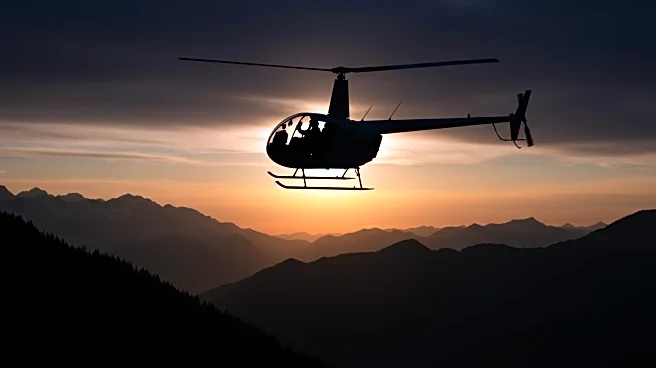What's Happening?
Reality TV star Matt Wright is facing legal challenges as he stands trial for allegedly attempting to pervert the course of justice following a helicopter crash that resulted in the death of his co-star, Chris 'Willow' Wilson. The incident occurred during a crocodile-egg collecting mission in February 2022, where Wilson was tragically killed, and pilot Sebastian Robinson was left paraplegic. Prosecutors allege that Wright instructed pilots to manipulate flight-time meters to extend flying hours beyond official limits, thereby delaying necessary service checks. Robinson, who was responsible for aircraft airworthiness and maintenance at Wright's company, Helibrook, testified that such practices were common under Wright's direction. He admitted to lying to investigators about these practices due to fear of losing his pilot's license.
Why It's Important?
The case highlights significant concerns about aviation safety and regulatory compliance within the industry. If the allegations are proven, it could lead to stricter oversight and regulatory reforms to prevent similar incidents. The trial also underscores the influence of high-profile figures in the aviation sector, where young pilots may feel pressured to comply with unsafe practices. The outcome of this trial could have implications for aviation companies, potentially leading to increased scrutiny and changes in operational procedures to ensure safety and compliance with aviation laws.
What's Next?
As the trial continues, further testimonies and evidence will be presented, which may shed more light on the extent of the alleged misconduct. The aviation industry and regulatory bodies will likely monitor the proceedings closely, as the verdict could prompt a reevaluation of current safety protocols and enforcement measures. Depending on the trial's outcome, there could be calls for more stringent regulations and oversight to prevent future occurrences of similar incidents.
Beyond the Headlines
The trial raises ethical questions about the responsibilities of public figures in ensuring safety and compliance within their operations. It also highlights the potential risks associated with prioritizing business interests over safety standards. The case may lead to broader discussions about the culture within the aviation industry and the need for systemic changes to protect both employees and the public.











